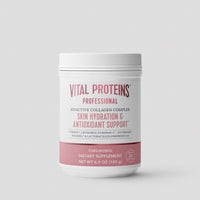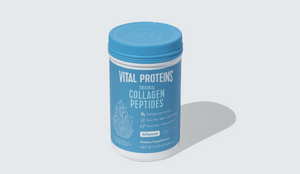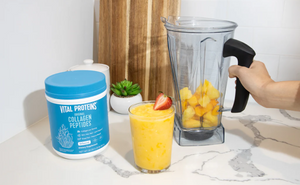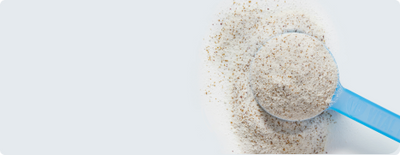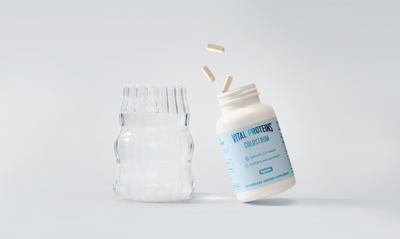No-chip gel polish has changed the manicure game in a very big way. It’s hard to resist the pull of a good gel polish… Unlike traditional manicures, gel manis actually last a decent amount of time (usually two weeks), making them seem totally worth the increased price.
But despite these obvious benefits, there are some downsides to gel polish. In addition to being more expensive than good old-fashioned nail polish, the mechanics of a no-chip mani call to mind some important questions. A no-chip gel manicure requires you to place your hands under a UV light without sunscreen and also involves some pretty suspicious chemicals. Should you be worried?
RELATED: The Do's and Dont's of At-Home Skincare

The UV Question
Most of us know that tanning beds are a big no-no when it comes to skin health. Tanning beds use UV rays to tan the skin, posing major health risks. The Skin Cancer Foundation warns strongly against the use of tanning beds… so why aren’t we more worried about sticking our hands directly under UV rays for the sake of pretty nails?
On this front, there’s reason to believe we can all breathe a collective sigh of relief. Experts seem to agree that the amount of radiation we’re exposed to during a routine no-chip mani is probably nothing to be concerned about. In fact, we get more UV exposure simply taking a short walk on a sunny day without sunscreen on.
“Being exposed to such a low dose, for only a few minutes, on only a small percent of the total surface of the body … the risk would be so small that it would be almost impossible to detect it,” says Paolo Boffetta, the director of cancer prevention at Mount Sinai Hospital in New York. “Being outside on a very sunny day will make a much bigger difference, in terms of the amount of exposure people get compared to this sort of thing.”
That said, UV rays are UV rays, and if you’re concerned, you could always apply a high-quality sunscreen to your hands and fingers prior to your mani appointment. Doing so can also help protect against another side effect of UV exposure: premature skin aging.
RELATED: How to Correctly Treat an Ingrown Hair

Chemicals in Gel Nail Polish
Even if the UV rays associated with no-chip manicures aren’t a huge deal, there are other factors to consider. Nail polish — gel and conventional varieties alike — is often laden with chemicals, some of which elicit cause for concern.
Three scary chemicals often used in nail polishes are formaldehyde, toluene and dibutyl phthalate, or DBP. Nail polishes that don’t include these chemicals often use the term “3-free” on their packaging. Some natural nail polish brands take if a few steps further, offering products that are “5-free” (don’t include formaldehyde, toluene, DBP, formaldehyde resin or camphor) or “7-free (don’t include formaldehyde, toluene, DBP, formaldehyde resin, camphor, ethyl tosylamide or xylene).
Formaldehyde is a known carcinogen, and toluene and DBP have been linked to developmental issues. Unfortunately, there’s good evidence to suggest that what you put on your nails can be absorbed into your body. Researchers at Duke University and The Environmental Working Group recently found that women who had painted their nails with polish containing triphenyl phosphate, or TPHP, had metabolites of the chemical in their system 14 hours later. TPHP is a suspected endocrine disrupter, a type of molecule that mimics estrogen in the body, leading to reproductive health concerns.
Better Options for Your Manicure
If, like many of us, you can’t stand the idea of naked nails, rest assured you don’t have to give up your nail polish habit completely. You’re just going to have to do some research. Find a nail salon in your area that carries natural polishes that are 3-, 5- or 7-free. And for you no-chip devotees? Yes, there is still hope for you. Brands like Bio Seaweed Gel and NCLA offer 5- and 7-free gels, respectively.





